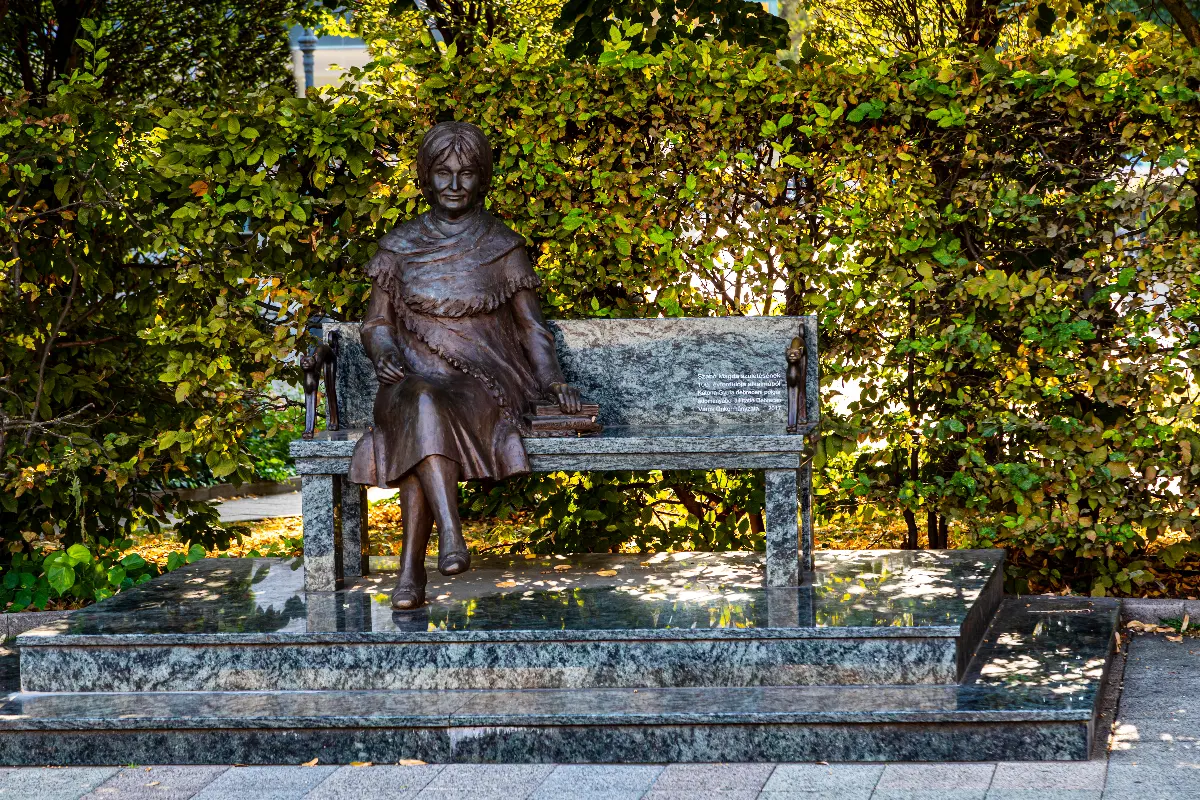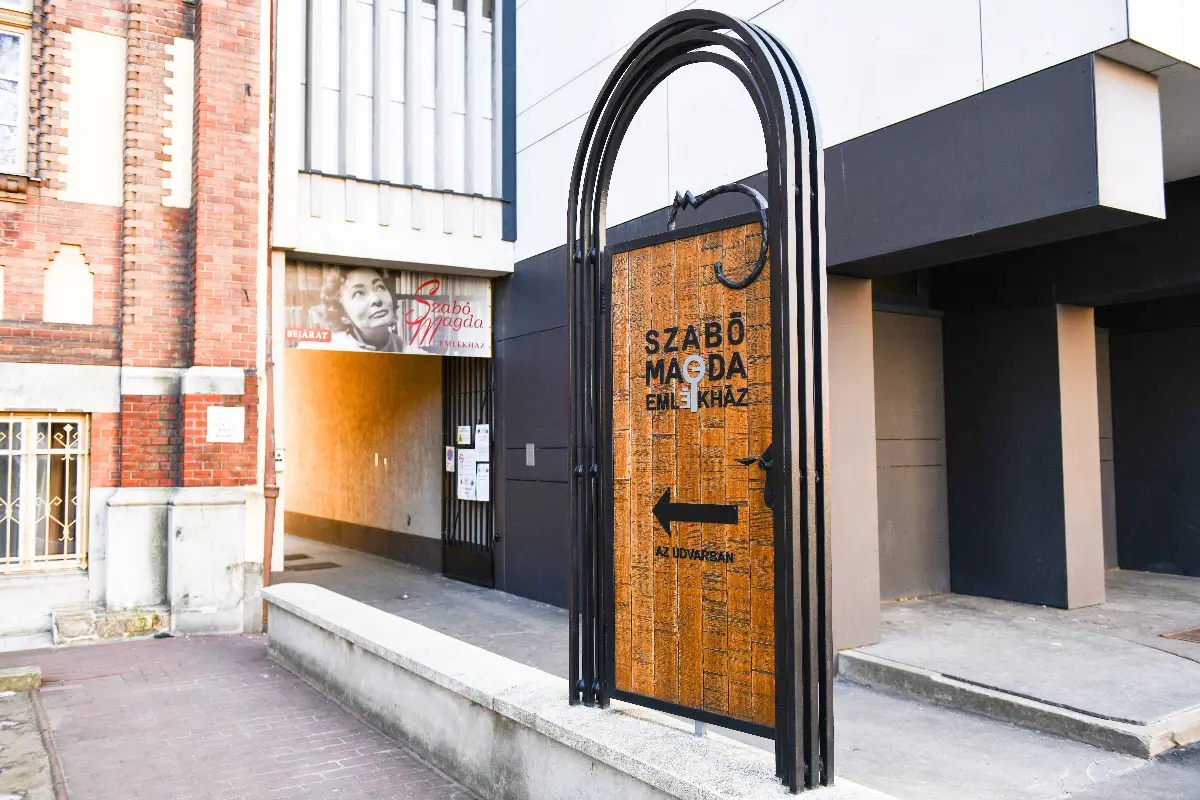
Helyszín címkék:
In Magda Szabó’s footsteps in Debrecen
Méhész Zsuzsa
Just like the embossing stamp of a notary, which merges into the background colour, but leaves a permanent mark perforating the structure of the paper: that’s the way Debrecen and being from Debrecen appears on the pages of Magda Szabó’s work. Several Hungarian cities, regions can be connected to famous literary characters, artists, numerous regions bear the marks of their famous offspring, just as Debrecen has “raised” some honorary citizens. In the case of the writer, not only the roots go back to Debrecen but the material of her life and work is interwoven by places, events and characters typically related to the city. On the hundredth anniversary of the Kossuth prize winning writer’s birth, the memorial house named after her was opened in the writer’s former school. The Dóczy Secondary Grammar School, ‘Debreceni Református Kollégium’ (Debrecen Reformed Residence Hall) is the home of the exhibit displaying Magda Szabó’s life, work and loyalty to Debrecen where you can imagine the writer’s reality with the help of furnishings, personal relics, quotations, a lot of books and the interior depicting Magda Szabó’s world.
“...my school, where I went as a student for twelve years and taught for two years, where my teachers realised that I was going to be a writer sooner than anyone else including me.”
The Dóczy Secondary Grammar School was a Girls’ Boarding School in 1928 — at that time it became obvious for György Szondy, the geography-chemistry teacher that his 11-year-old student really stood out. She was an exceptionally intelligent but headstrong young woman. Szondy was also good at literature beside science and it was he who stated: “Szabó, you will be a writer.” The early encouragement and the alma mater may have played an important role in the writer’s career. Magda Szabó created books of enduring value in many genres: she is acknowledged for her short stories, dramas and books for young readers besides her novels. Almost a dozen films were made based on her books which were translated into 42 languages. In Hungary the series of Abigél (Abigail) achieved great popularity which reveals the everyday life in a former girls’ boarding school. Later she returned as a teacher and a patron to the school of which, she always spoke highly.

39 Piac street
In her novel Régimódi történet (Old-Fashioned Story), Magda Szabó wrote into the plot the building that the locals know as “Lábasház” (a type of houses built between pillars with a porch on the front). In this detailed history of her family, the writer’s great-grand mother appears. From 1786,the former tradesman, Antal József Rickl, her great-grandfather lived in the two-storey building, here he ran his shop named after the Turkish Emperor — where Petőfi not just appeared but he evenleft his decorative sword. The precious relic was kept in the wall safe for a long time by the family. The gate of the house is decorated by a lion’s head made of copper that the young Magda Szabó used to stroke in her childhood when she went walking there with her mother.
Townhall
“The Townhall also stood here, the third most important building after the Great Church and the Residence Hall, which I liked because I was often taken up here, not only to see my father working there, but to show me the lamb. The lamb on the large painting depicting the coat of arms of the citycould be seen on the wall of the staircase opening to the right of the entrance, when I was a little girl, they lifted me up so that I could pet the lamb.”
Magda Szabó knew not only the lion of the Lábasház, but also the lamb of the Townhall very well — her father's workplace was in the building, as he was a city councillor within its walls. In 1977, she could receive her diploma as an honorary citizen here, and forty years later, on her ninetieth birthday, the key to the city was handed over to the most famous Hungarian writer, who is a favourite of the French actress, Sophie Marceau among others. The key is kept in ‘Szabó Magda Emlékház’ (Magda Szabó Memorial House)

The Great Church
"... my home in Debrecen doesn't really need furniture or walls. I live in an entire geographical andlegislative unit: the city where I received my physical and mental form is entirely mine."
Magda Szabó depicted the symbol and iconic building of the city not only in her novels, essays and poems. It also played an important role in her life: her parents joined their lives forever here, she was baptized here, and in 1985 she, as the first female chief caretaker of the Trans-Tisza Reformed Church was inaugurated here. The writer's father’s favourite building was the Reformed Residence Hall, and her mother's favourite was the Great Church in Debrecen. While they were alive, they mettheir daughter at the railway station every time she came home to visit. Later, Magda Szabó was greeted by the two towers of the Great Church. When she saw them, she knew: she had arrived home.
“No one promised that life would be smooth and harmonious. My mother said, learn one thing: On Monday it’s Monday, on Tuesday it’s Tuesday. None of them are twins. Don’t start wailing in fear on Monday about what Tuesday brings. What Tuesday can bring you, don't plan on Monday. It might not come to pass. One day is like this, the next is like that. You must learn only one thing if you want a harmonious life. If it brings good things, you should soberly bear the fact that you have joy now. Sober and disciplined. And if there is trouble, you should also bear it soberly and with discipline. This is the way I was brought up.” Magda Szabó’s monument is located in front of the Great Church. She would have been a hundred years old on the day of its inauguration.











